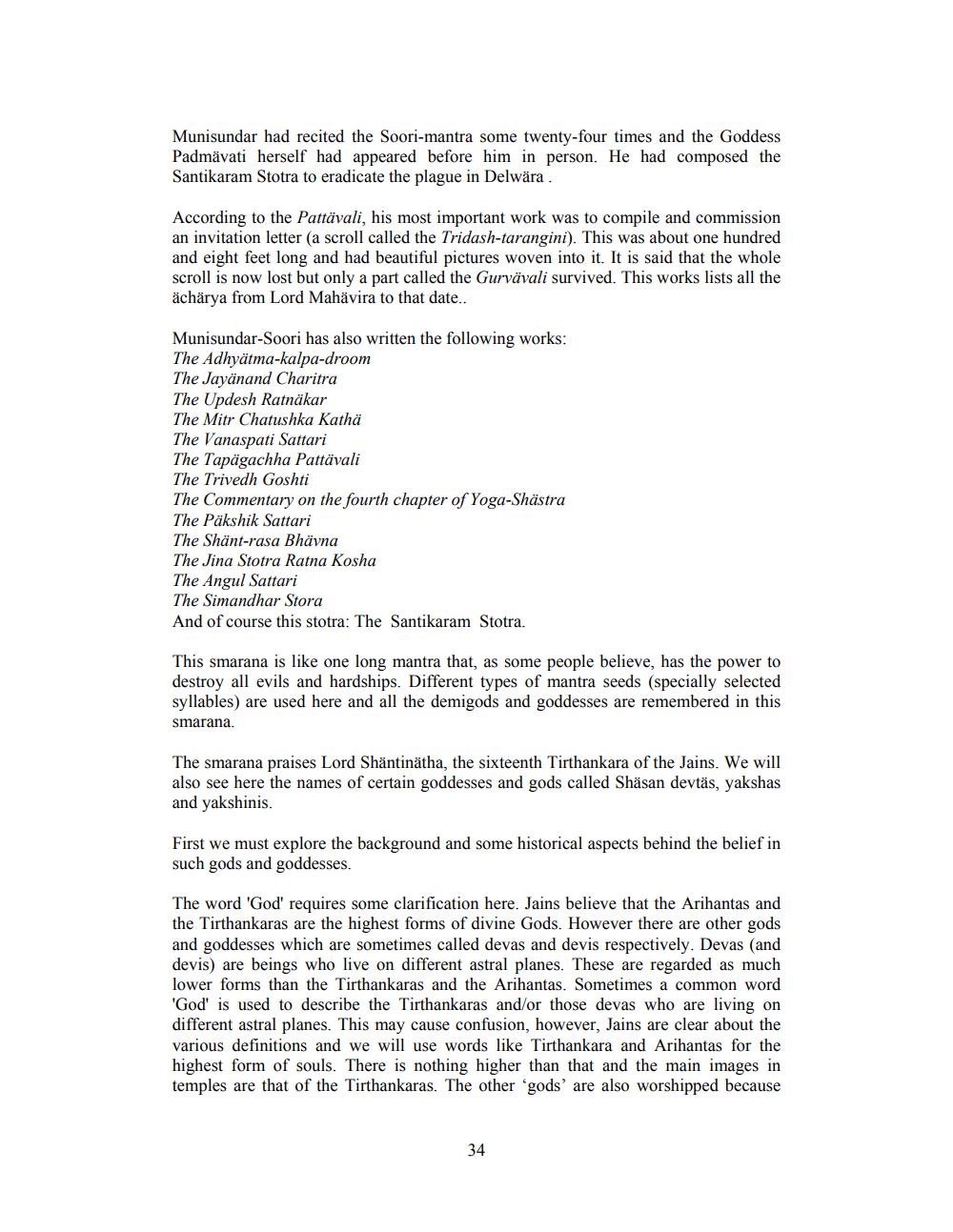________________
Munisundar had recited the Soori-mantra some twenty-four times and the Goddess Padmavati herself had appeared before him in person. He had composed the Santikaram Stotra to eradicate the plague in Delwära.
According to the Pattävali, his most important work was to compile and commission an invitation letter (a scroll called the Tridash-tarangini). This was about one hundred and eight feet long and had beautiful pictures woven into it. It is said that the whole scroll is now lost but only a part called the Gurvävali survived. This works lists all the ächärya from Lord Mahävira to that date..
Munisundar-Soori has also written the following works: The Adhyätma-kalpa-droom The Jayanand Charitra The Updesh Ratnakar The Mitr Chatushka Kathä The Vanaspati Sattari The Tapägachha Pattävali The Trivedh Goshti The Commentary on the fourth chapter of Yoga-Shästra The Päkshik Sattari The Shänt-rasa Bhävna The Jina Stotra Ratna Kosha The Angul Sattari The Simandhar Stora And of course this stotra: The Santikaram Stotra.
This smarana is like one long mantra that, as some people believe, has the power to destroy all evils and hardships. Different types of mantra seeds (specially selected syllables) are used here and all the demigods and goddesses are remembered in this smarana.
The smarana praises Lord Shäntinätha, the sixteenth Tirthankara of the Jains. We will also see here the names of certain goddesses and gods called Shäsan devtäs, yakshas and yakshinis.
First we must explore the background and some historical aspects behind the belief in such gods and goddesses.
The word 'God' requires some clarification here. Jains believe that the Arihantas and the Tirthankaras are the highest forms of divine Gods. However there are other gods and goddesses which are sometimes called devas and devis respectively. Devas (and devis) are beings who live on different astral planes. These are regarded as much lower forms than the Tirthankaras and the Arihantas. Sometimes a common word 'God' is used to describe the Tirthankaras and/or those devas who are living on different astral planes. This may cause confusion, however, Jains are clear about the various definitions and we will use words like Tirthankara and Arihantas for the highest form of souls. There is nothing higher than that and the main images in temples are that of the Tirthankaras. The other gods are also worshipped because




